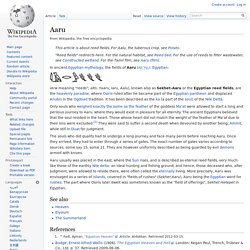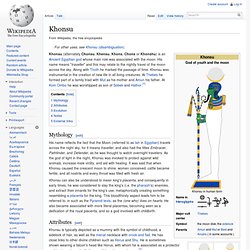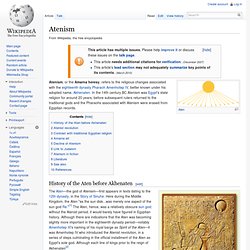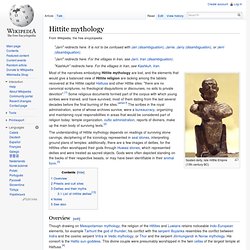

Aaru. This article is about reed fields.

For Aalu, the tuberous crop, see Potato. In ancient Egyptian mythology, the fields of Aaru (/ɑːˈruː/; Egyptian: Only souls who weighed exactly the same as the feather of the goddess Ma'at were allowed to start a long and perilous journey to Aaru, where they would exist in pleasure for all eternity. The ancient Egyptians believed that the soul resided in the heart. Those whose heart did not match the weight of the feather of Ma'at due to their sins were excluded.[1] They were said to suffer a second death when devoured by another being, Ammit, while still in Duat for judgment. The souls who did qualify had to undergo a long journey and face many perils before reaching Aaru. See also References Budge, Ernest Alfred Wallis (1906). External links Egyptian Field of Reeds (Aaru) and Christian Heaven. Heqet. To the Egyptians, the frog was a symbol of life and fertility, since millions of them were born after the annual inundation of the Nile, which brought fertility to the otherwise barren lands.

Consequently, in Egyptian mythology, there began to be a frog-goddess, who represented fertility, referred to by Egyptologists as Heqet (also Heqat, Hekit, Heket etc., more rarely Hegit, Heget etc.),[1] written with the determinative frog.[2] Name and depiction[edit] Her name was probably pronounced more like *Ḥaqā́tat in Middle Egyptian, hence her later Greek counterpart Ἑκάτη (see Hecate).[3] Heqet was usually depicted as a frog, or a woman with a frog's head, or more rarely as a frog on the end of a phallus to explicitly indicate her association with fertility.
Khonsu. Khonsu, the ancient Egyptian moon-god, was depicted either as a falcon wearing the moon-disk on his head (left) or as the child of Amun and Mut.

Khonsu (alternately Chonsu, Khensu, Khons, Chons or Khonshu) is an Ancient Egyptian god whose main role was associated with the moon. His name means "traveller" and this may relate to the nightly travel of the moon across the sky. Along with Thoth he marked the passage of time. Khonsu was instrumental in the creation of new life in all living creatures. At Thebes he formed part of a family triad with Mut as his mother and Amun his father. Isis. Temple of Isis in Philae, Egypt Isis (Ancient Greek: Ἶσις, original Egyptian pronunciation more likely "Aset" or "Iset") is a goddess in Ancient Egyptian religious beliefs, whose worship spread throughout the Greco-Roman world.

She was worshipped as the ideal mother and wife as well as the patroness of nature and magic. She was the friend of slaves, sinners, artisans and the downtrodden, but she also listened to the prayers of the wealthy, maidens, aristocrats and rulers.[1] Isis is often depicted as the mother of Horus, the hawk-headed god of war and protection (although in some traditions Horus's mother was Hathor). Isis is also known as protector of the dead and goddess of children.
This myth became very important during the Greco-Roman period. Etymology[edit] Two-Spirit. Two-spirit people (also two spirit or twospirit) is a modern umbrella term used by some indigenous North Americans for gender-variant individuals within their communities.

Non-Native anthropologists have historically used the term berdaches /bərˈdæʃɨz/ for individuals who fulfill one of many mixed gender roles in First Nations and Native American tribes, but this term has more recently fallen out of favour. Third and fourth gender roles historically embodied by two-spirit people include performing work and wearing clothing associated with both men and women. Some tribes consider there to be at least four gender identities: masculine men, feminine men, masculine women, and feminine women. The presence of male two-spirits "was a fundamental institution among most tribal peoples. Terminology[edit] Definition and historic societal role[edit] Two-spirit individuals are viewed in some tribes as having two identities occupying one body. Media depictions[edit] Self-identified two-spirits[edit]
Atenism. Atenism, or the Amarna heresy, refers to the religious changes associated with the eighteenth dynasty Pharaoh Amenhotep IV, better known under his adopted name, Akhenaten.

In the 14th century BC Atenism was Egypt's state religion for around 20 years, before subsequent rulers returned to the traditional gods and the Pharaohs associated with Atenism were erased from Egyptian records. Hittite mythology. Seated deity, late Hittite Empire (13th century BC) The understanding of Hittite mythology depends on readings of surviving stone carvings, deciphering of the iconology represented in seal stones, interpreting ground plans of temples: additionally, there are a few images of deities, for the Hittites often worshipped their gods through Huwasi stones, which represented deities and were treated as sacred objects.

Gods were often depicted standing on the backs of their respective beasts, or may have been identifiable in their animal form.[3] Overview[edit] Priests and cult sites[edit] The liminal figure mediating between the intimately connected worlds of gods and mankind was the king and priest; in a ritual dating from the Hittite Old Kingdom period: